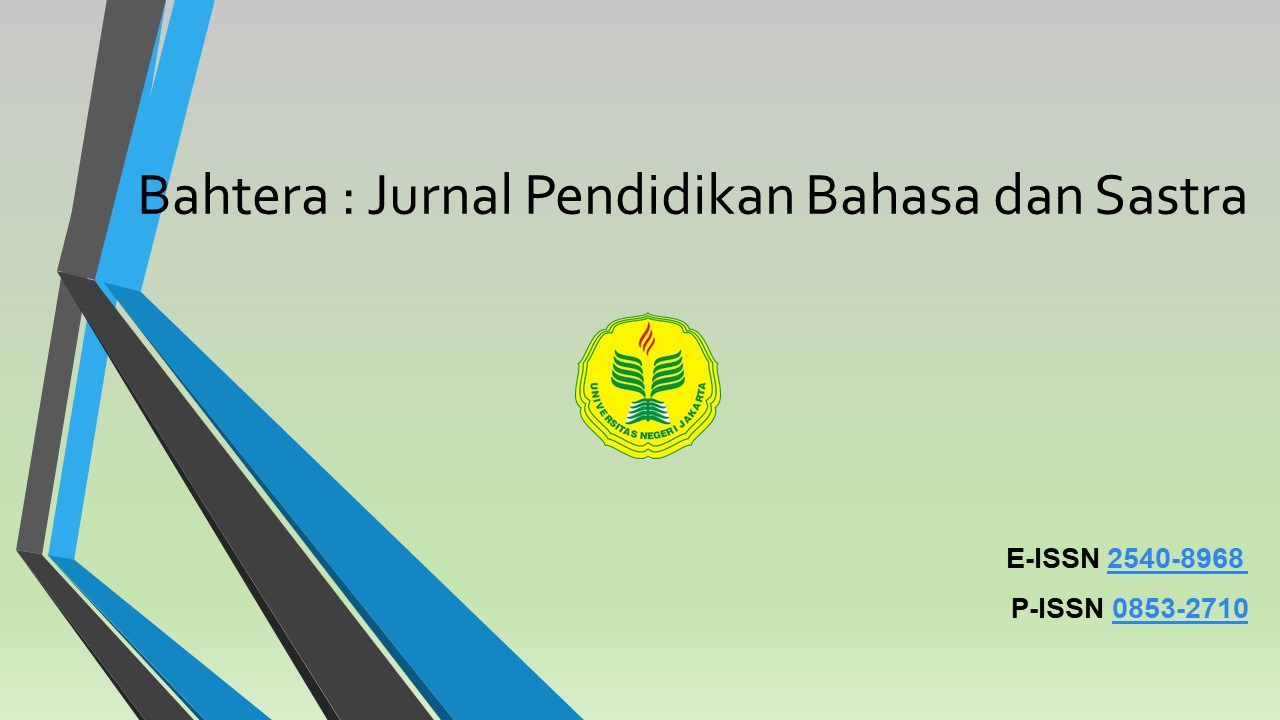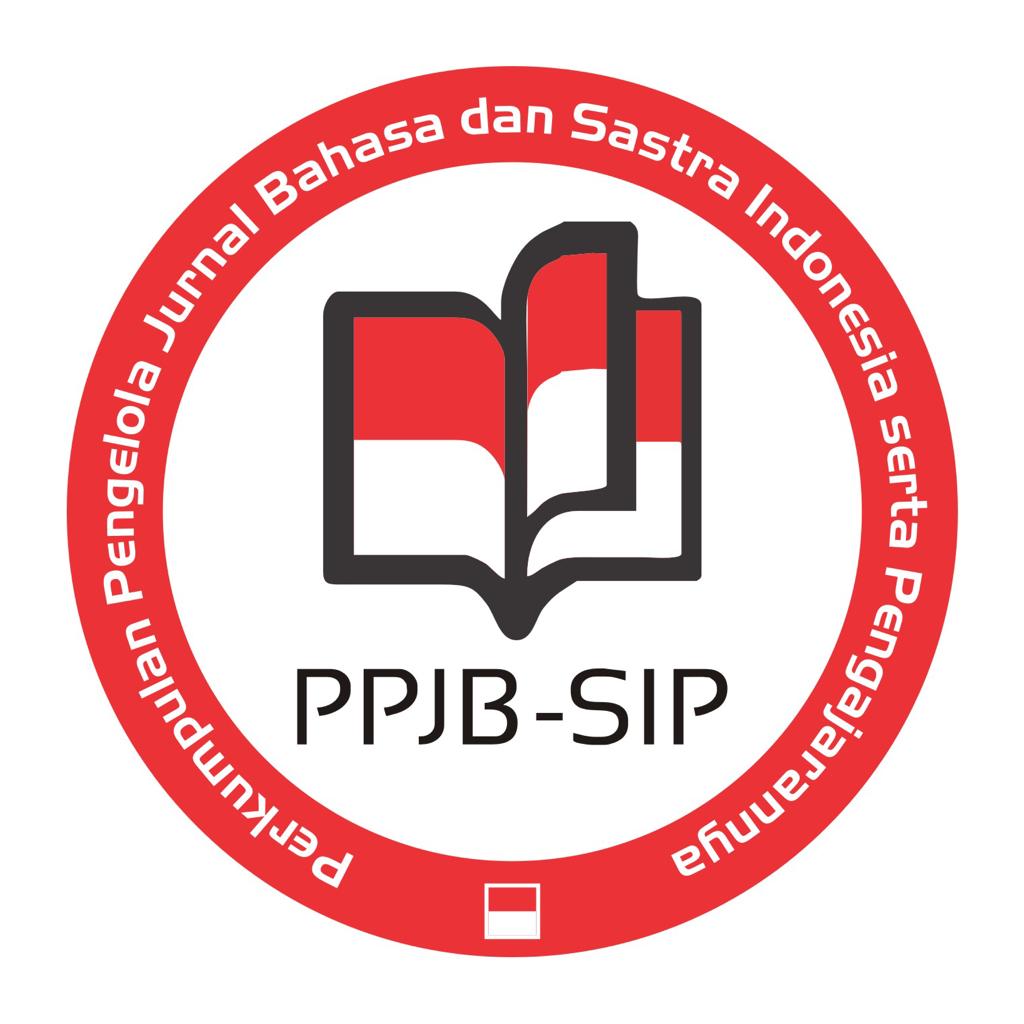Korean- English Code Mixing and Code Switching Of New Jeans’s Song
DOI:
https://doi.org/10.21009/bahtera.231.10Keywords:
Bilingual, Code Mixing, Code Switching, Korean English, SongAbstract
This paper reviewed code-mixing and code-switching along with the worldwide recognition of K-Pop songs by analyzing the English usage of "Hype Boy" and "OMG" by New Jeans, a fourth-generation K-Pop group. All songs were examined using Muysken's (2000) code-mixing theory, Stockwell's (2007) code-switching theory, and Fernandez-Martinez et al.'s (2014) and Kwon's (2019) comment analysis. The results revealed that the majority of code-mixing in "Hype Boy" was insertion and the majority of code-mixing in "OMG" was alternation, but there was no congruent lexicalization found in the two songs. However, the majority of code switches in "Hype Boy" were inter-sentential, whereas "OMG" was intra-sentential, and two tag-switching data were found. Aside from that, based on audience responses in the comment section, the audience responses showed up that they were impacted by the singers' word pronunciation errors, however, a lot were also impressed with their easy-to-listen-to songs. The study finds that the accurate pronunciation and the new English language switching function seem to have played a significant role in the success of "Hype Boy" and "OMG" among bilingual audiences.
References
Bland, E. (2019). How “Smart” Are K-Pop Fans: Can the Study of Emotional Intelligence of K-Pop Fans Increase Marketing Potential? Culture and Empathy: International Journal of Sociology, Psychology, and Cultural Studies, 2, 105–115. https://doi.org/10.32860/26356619/2019/2.2.0004
Bruce Lawrence, C. (2010). The Verbal Art of Borrowing: Analysis of English Borrowing in Korean Pop Songs. Asian Englishes, 13(2), 42–63. https://doi.org/10.1080/13488678.2010.10801282
Chanda, A., Das, D., & Mazumdar, C. (2016). Unraveling the English-Bengali Code-Mixing Phenomenon. 80–89. https://doi.org/10.18653/v1/W16-5810
Holmes, J. (2013). An Introduction to Socialinguitstic (fourth). Routledge.
Jimmi, J., & Davistasya, R. (2019). CODE-MIXING IN LANGUAGE STYLE OF SOUTH JAKARTA COMMUNITY INDONESIA. Premise: Journal of English Education, 8, 193. https://doi.org/10.24127/pj.v8i2.2219
Jocelin, E. (n.d.). CODE MIXING AND CODE SWITCHING IN A KOREAN-SONG LYRIC.
Lee, J. S. (2004). Linguistic hybridization in K-Pop: discourse of self-assertion and resistance. World Englishes, 23(3), 429–450. https://doi.org/https://doi.org/10.1111/j.0883-2919.2004.00367.x
Likhitphongsathorn, T., & Sappapan, P. (n.d.). Study of English Code-mixing and Code-switching in Thai Pop Songs.
Maharani, A., & Sudarwati, E. (2021). “PUBLISH OR PERISH”: JAVANESE LANGUAGE MAINTENANCE ON JAVANESE-ENGLISH CODE-SWITCHING SONG. Lire Journal (Journal of Linguistics and Literature, 5(2). https://doi.org/10.33019/lire.v
Muysken, P. (2000). Bilingual speech a typology of code mixing. Cambridge University Press.
Pertiwi Salsabila Putri. (2023, January 18). Daftar Prestasi NewJeans, Masih Rookie Sudah Debut Billboard Hot 100! Https://Cewekbanget.Grid.Id/.
Stockwell, P. (2007). Sociolinguistics - a Resource Book for Students (second). Routledge.
Wan Rusli, W. N. S. S., Shaari, A. H., Zainuddin, S. Z., Shi, N. L., & Amin, A. S. (2018). Intra and intersentential code-switching phenomena in modern Malay songs. In 3L: Language, Linguistics, Literature (Vol. 24, Issue 3, pp. 184–205). Penerbit Universiti Kebangsaan Malaysia. https://doi.org/10.17576/3L-2018-2403-14
Downloads
Published
How to Cite
Issue
Section
License
License & Copyright
This work is licensed under a Creative Commons Attribution 4.0 International License.










